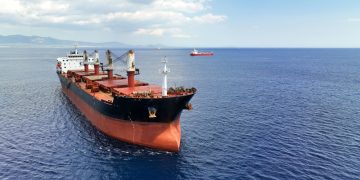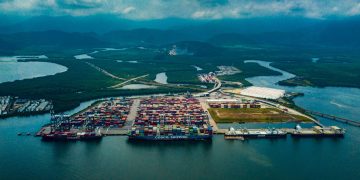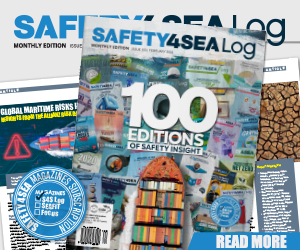History has shown that being alert onboard is a crucial element to prevent accidents from happening on board ships. The error is, of course, human and inevitable, but over the years, a more enhanced safety culture has been promoted, aiming to teach seafarers how to keep their situational awareness and ensure safe operations.
The crew needs to watch out for other vessels in the vicinity, sea state, tide and current, depth of water and communication between vessel traffic services and other boats. Among the information that will help achieve that, are: passage and voyage plan data, safe navigational tracks, safety and legal requirements, boat capability, fuel reserves, course and speed deviations. The OOW needs to know their vessel’s characteristics, like construction, propulsion, equipment and systems.
Deficient situational awareness can be caused by:
- Data not observed due to passive behaviour, work overload or distractions
- Misunderstanding perceived information and incomplete mental picture
- Fail to recognize changes that need to be made according to the evolving environment
- Lack of training, familiarization and motivation
- Overworked, stressed and fatigued crew
- Information overload due to developing computer-run equipment
However, shipping safety has evolved and, even though, distraction is human, there are ways to get your focus back, by following these five steps:
- Follow the rules and operating procedures
- Switch from automation to manual
- Slow down or alter course in order to buy time and plan your response to a situation
- Communicate with the rest of the team
- Assess the situation from different perspectives and different sources
The three levels of situational awareness
There are three levels of situational awareness as illustrated by Dr. Mica R. Endsley, Former Chief Scientist of the U.S. Air Force:
Level 1 is called perception. OOW perceives data related to the course, speed and current position of his vessel and others in the vicinity. This perception is based on the natural human senses of sight, hearing, smell and touch.
Level 2 is called comprehension. Here, the perceived data must be understood and connected into a whole. The watchkeeping officer understands what the data mean to him and his goals. By combining the data, the OOW will form a mental picture of the current situation that will help understand the voyage plan data, course deviation and vessel manoeuvrability.
Level 3 is called projection. In the third and final level the OOW – after doing the first two levels correctly – must be able to project a possible outcome in the near future.
Improving situational awareness
Quality situational awareness is a shared activity. For the best situational awareness, seafarers must use all their senses – sight, hearing, smell, touch and taste. What is more, their instinct based on knowledge and experience can help organize, recognize and understand the environment.
Additionally, modern technology has introduced navigation systems to reduce man-made accidents, such as the Central Alert Management Human Machine Interface, Integrated Bridge System, ECDIS, AIS, RADAR and many more. Maritime technology has changed shipping safety and seafarers must adapt and learn how to utilize it effectively.
Because developing technologies are considered by some to negatively affect the crew’s role, they need to be fit for purpose and ensure that they will not act as a distraction for mariners. To maintain situational awareness tasks should be divided, meaning that there has to be at least one person that is on the look out and observes the big picture.
Keeping in mind that we are in the post Covid-19 era, officers and crew staying on board for up to a year has negatively affected situational awareness and safety in general. In order to make s real difference the industry needs to grasp human element issues at a higher level. Safety management culture is much needed, as is the investment in well-organized training and education.
Tips for quality situational awareness
- Strong understanding of the environment
- Use of all available means, senses and tools
- Always cross-check yourself and the tools you are using
- Always share your observations and listen to others made
- Know your limits to understand when you are overloaded
- Try to be alert and focused at all times
- Check for misinformation and fake news
- Trust your instincts
- Read accident reports in order to extract lessons learned
- Continuous improvement, learning and experience
- Know your vessel’s equipment and systems (autopilot, radar, GPS, AIS, compass, propulsion)
- Try and manage your time as good as possible and allow time for unplanned incidents
- Know the geographical position of your boat
- Verbalize your observations and plans to remain conscious and alert of what you are doing
- Monitor fatigue levels to see how the crew is coping
- Use the technical aids at your disposal to highlight potential danger



































































First on the Tip List and something which is fundamentally important is to understand what the three levels of situational awareness actually comprise of and more importantly what the factors are at each level that can adversely affect SA. The article is a good introduction but it is not the complete picture by a long way.
Situational awareness can be imensly improved by combining passage planning and BRM, which is founded on sharing mental models. This is described in the Seaways article “Mental Models in Confined Waters” published June 2018 and further explained in the book Diligent Pilotage by Capt. Antonio Di Lieto.